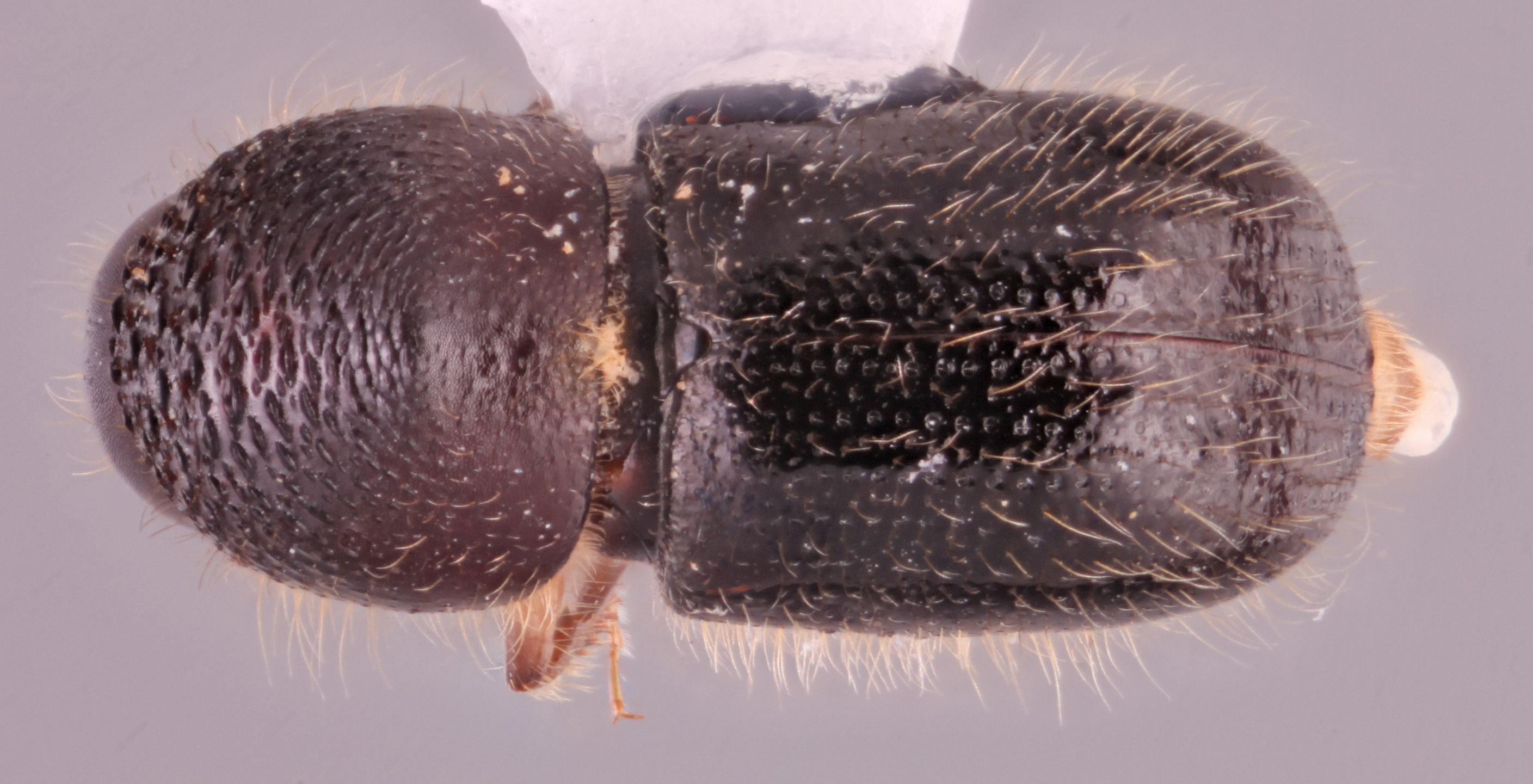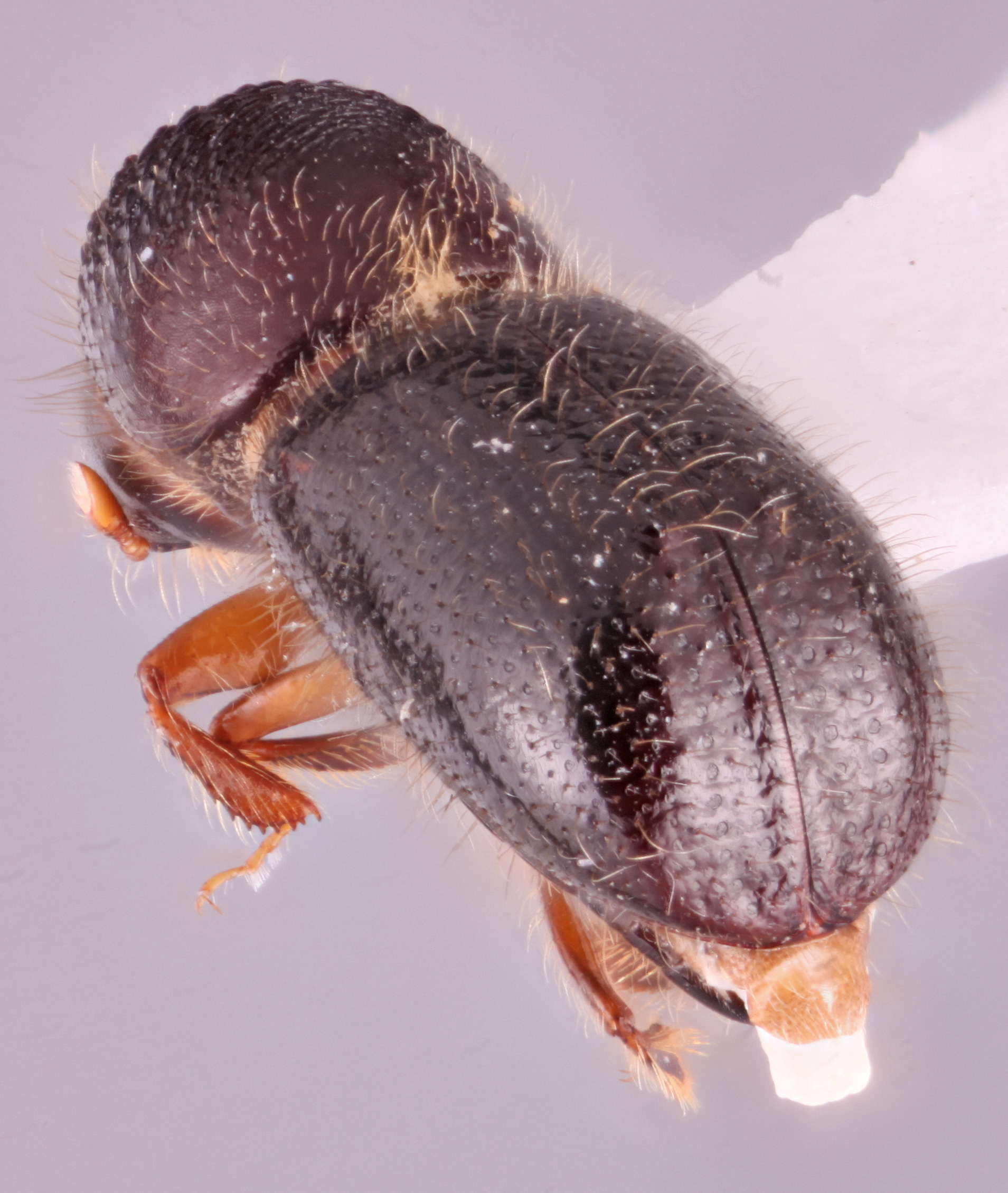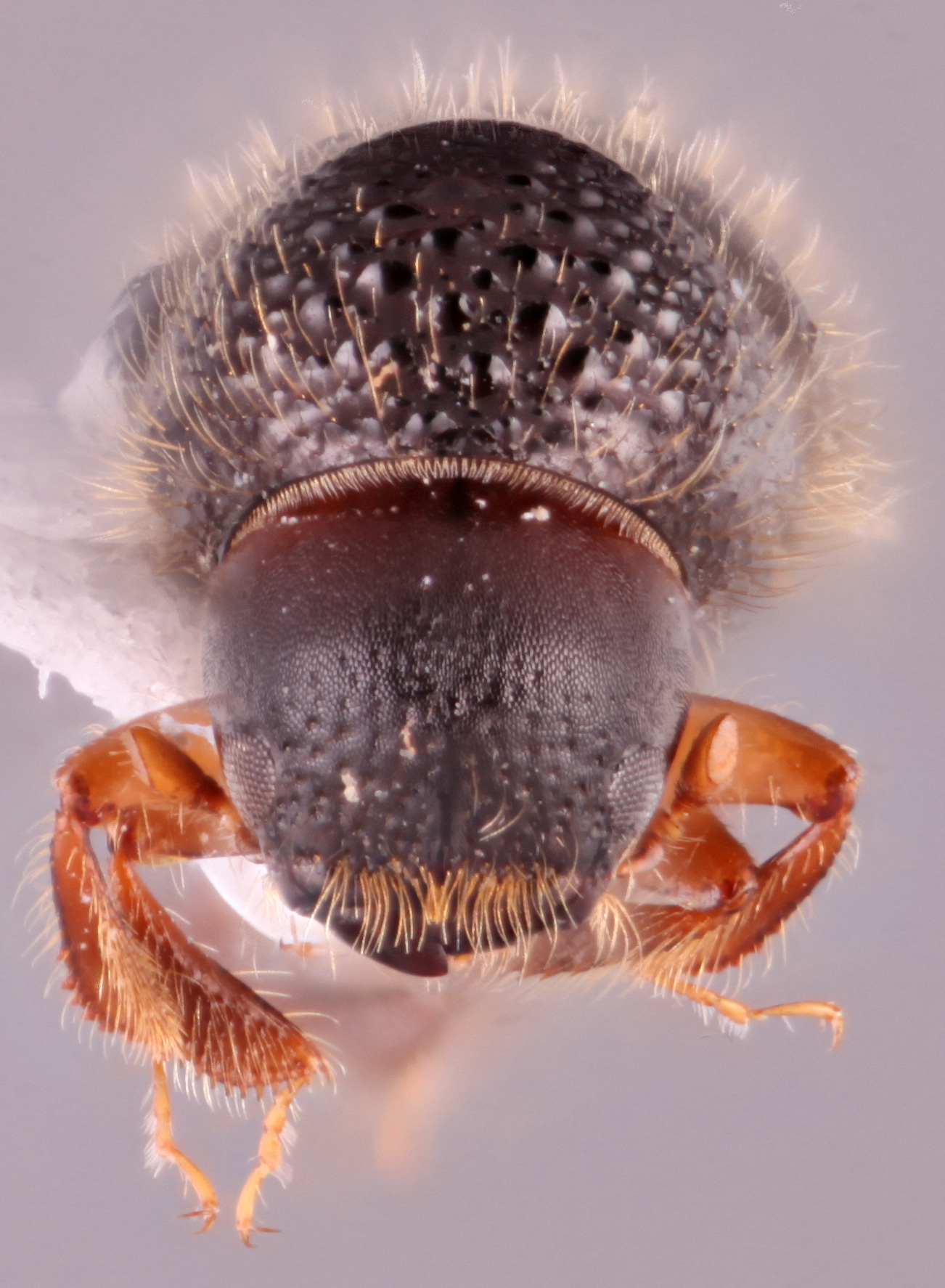Anisandrus apicalis
|
Anisandrus apicalis lateral; S.M. Smith |
|
Anisandrus apicalis dorsal; S.M. Smith |
|
Anisandrus apicalis declivity; S.M. Smith |
|
Anisandrus apicalis frontal; S.M. Smith |
Taxonomic history
Xyleborus apicalis Blandford, 1894b: 105.
Ambrosiodmus apicalis (Blandford): Wood, 1989: 169.
Anisandrus apicalis (Blandford): Hulcr et al., 2007: 578.
Diagnosis
3.05−3.4 mm long (mean = 3.17 mm; n = 5); 2.33−2.43 times as long as wide. This species can be distinguished by the mesonotal mycangial tuftmycangial tuft:
tuft of setae that denotes the mycangia exterior opening
 the length of the scutellumscutellum:
the length of the scutellumscutellum:
a shield-like sclerotized plate located at the midpoint of the elytral base
; elytralelytral:
pertaining to the elytra
discdisc:
the flat central upper surface of any body part (e.g. pronotum and elytra) with or without a weak transverse saddle-like depression; posterolateralposterolateral:
with or without a weak transverse saddle-like depression; posterolateralposterolateral:
relating to end of the side part/portion
 margin costate to interstriaeinterstria:
margin costate to interstriaeinterstria:
longitudinal spaces along the elytra between the striae, which is not as<br />
impressed and bear smaller punctures.
 5; declivitydeclivity:
5; declivitydeclivity:
downward slope of either the pronotum or elytra
 appearing bisulcatebisulcate:
appearing bisulcatebisulcate:
pertaining to an elytral declivity with two suci; a sulcus present on each elytron but the suture remains convex
, weakly impressedimpressed:
a depression in a surface
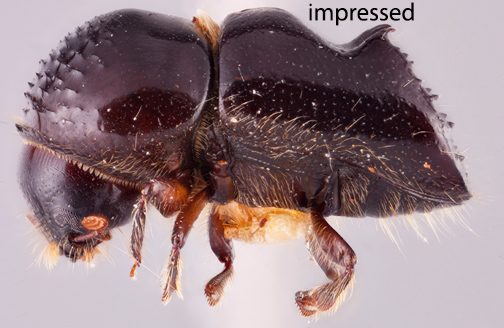 from striaestria:
from striaestria:
punctures in rows, which may or may not be impressed to make grooves 1−2, interstriaeinterstria:
1−2, interstriaeinterstria:
longitudinal spaces along the elytra between the striae, which is not as<br />
impressed and bear smaller punctures.
 3 feebly inflatedinflated:
3 feebly inflatedinflated:
blown up; distended
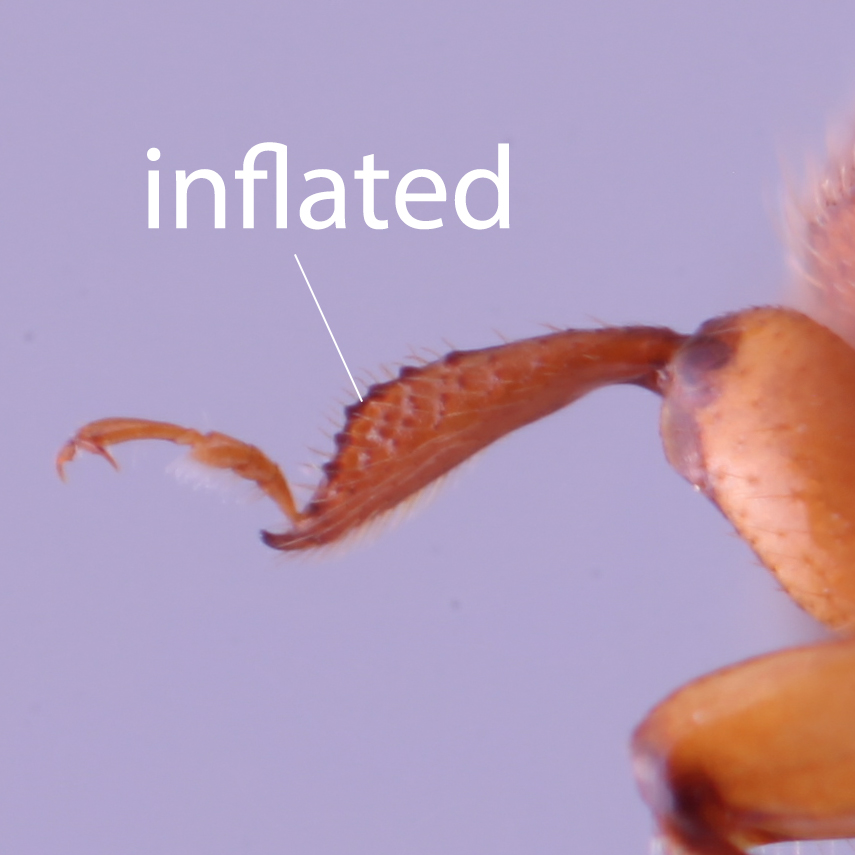 , tuberculate from basebase:
, tuberculate from basebase:
point or edge closest to the body; opposite of apex to apicalapex:
to apicalapex:
point or edge furthest from the body; opposite of base
 half then becoming flattened and unarmed to apexapex:
half then becoming flattened and unarmed to apexapex:
point or edge furthest from the body; opposite of base
 ; and moderately sized sharp incurved spinespine:
; and moderately sized sharp incurved spinespine:
an elongate projection of the exoskeleton that is longer than its basal width at basebase:
at basebase:
point or edge closest to the body; opposite of apex of declivitydeclivity:
of declivitydeclivity:
downward slope of either the pronotum or elytra
 on interstriaeinterstria:
on interstriaeinterstria:
longitudinal spaces along the elytra between the striae, which is not as<br />
impressed and bear smaller punctures.
 2.
2.
This species strongly resembles Anisandrus cristatus and Anisandrus congruens and is most easily distinguished by the moderate size, the less strongly impressedimpressed:
a depression in a surface
 declivitaldeclivital:
declivitaldeclivital:
pertaining to the elytral declivity
sulci and smaller spinesspine:
an elongate projection of the exoskeleton that is longer than its basal width on interstriaeinterstria:
on interstriaeinterstria:
longitudinal spaces along the elytra between the striae, which is not as<br />
impressed and bear smaller punctures.
 3 that are not backwardly hooked and much smaller than the spinespine:
3 that are not backwardly hooked and much smaller than the spinespine:
an elongate projection of the exoskeleton that is longer than its basal width at the summitsummit:
at the summitsummit:
highest point, used for pronotum and elytra, denotes the peak between pronotal frontal slope and disc, and between elytral disc and declivity of interstriaeinterstria:
of interstriaeinterstria:
longitudinal spaces along the elytra between the striae, which is not as<br />
impressed and bear smaller punctures.
 2.
2.
May be confused with
Anisandrus congruens, A. cristatus, A. geminatus, A. niger, A. sinivali, and A. venustus
Distribution
China (Anhui, Guangxi, Guizhou, Hainan, Jiangxi, Shanxi, Sichuan, Xizang, Yunnan), India (Meghalaya, Sikkim, West Bengal), Japan, South & North Korea, Kuril Islands, Nepal
Host plants
a polyphagous species usually attacking angiosperms, but also recorded from Pinus (Pinaceae) (Murayama 1936Murayama 1936:
Murayama J. 1936. Notes sur les Scolytides (Coleacute;optegrave;res) de Honshucirc; et Kiushucirc;, Japon. Tenthredo 1: 121-149., Nobuchi 1966Nobuchi 1966:
Nobuchi A. 1966. Bark-beetles injurious to pine in Japan. Bulletin of the Government Forest Experiment Station,Tokyo 185: 1-49, pls. 1-6. (in Japanese; summary and key in English))
Remarks
Published records from India, Nepal, Thailand, and some Chinese provinces may refer to Anisandrus cristatus or Anisandrus n. sp. 8, with which A. apicalis has been confusedconfused:
of markings, having indefinite outlines or running together as lines or spots without definite pattern; usually referring to punctures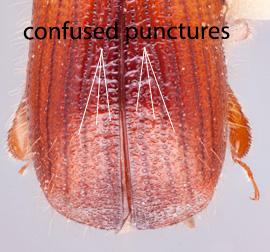 previously.
previously.
DNA data
Sequences available for COI CAD.


